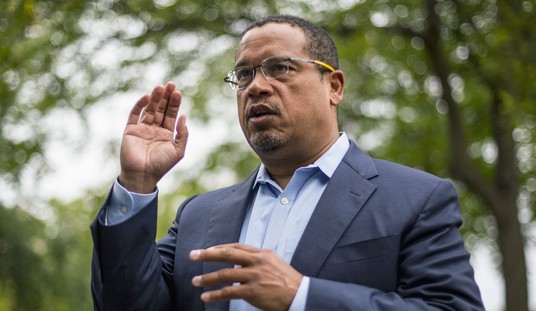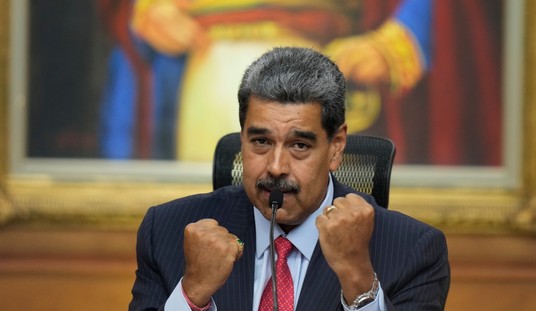This isn’t a new U.S. policy, but restating it at this moment in time feels new and significant. Crimea is now a front in the war, after all, and Zelensky has been threatening to reclaim it. A public vote of confidence from Uncle Sam like the one below at today’s Crimea Platform Summit suggests that the White House won’t force Ukraine to settle for a return to the pre-February status quo as its ultimate endgame.
A return to the pre-2014 status quo might now be on the table.
What makes this extra potent is the fact that the Ukrainians have been walking the walk lately, not just talking the talk. The shocking attack on Russia’s Saki air base near Novofederovka proved that Crimea is now within range of Ukrainian weapons (or saboteurs). The fact that Russian air defenses have been active in Sevastopol lately is further proof that no target is completely safe, not even Russia’s key Black Sea naval base. The fact that Blinken is bear-hugging Ukraine’s claims to Crimea in that context is a warning to Moscow that the supply of American weapons might not run dry if and when Ukraine pushes Russia back in the Donbas. If the Ukrainians manage to retake Kherson and want to proceed south into the peninsula, Biden might let them.
Or at least, that’s what Blinken wants Putin to think. Watch, then read on.
In my remarks to the Crimea Platform Summit, I urged the international community to keep raising the costs and pressure on President Putin and his enablers until all Russian troops leave Ukraine. Crimea is Ukraine. That was our position in 2014, and it remains in 2022. pic.twitter.com/99W301ItTq
— Secretary Antony Blinken (@SecBlinken) August 23, 2022
Blinken isn’t the only major international figure affirming Ukraine’s authority over Crimea today. Turkey’s leader, Erdogan, also addressed the summit and insisted that “The return of Crimea to Ukraine, of which it is an inseparable part, is essentially a requirement of international law.” Erdogan visited Zelensky in Kiev last week to discuss the standoff at the Zaporizhzhia nuclear plant in the east, which he fears could become another Chernobyl. And Ukraine has also been an eager consumer of Turkish Bayraktar drones during the war, which it used to ruinous effect against Russian armor in the early battles in the north. I’m surprised to see Erdogan squarely on NATO’s side here instead of triangulating with Russia but he’s sounded like any other European leader of late.
Here was the scene a few nights ago in Sevastopol, home to one of the Russian military’s most important bases and one of its very few warm-water ports:
More footage of Russian anti-aircraft artillery currently firing in Sevastopol… pic.twitter.com/FCZP95vNPH
— Jimmy (@JimmySecUK) August 20, 2022
Nothing apart from brute force will make them give up an asset like Sevastopol, which means both the Ukrainian army and the Pentagon would be accepting the prospect of enormous costs if Zelensky’s troops manage to push through Kherson and onto the peninsula. Zelensky is talking tough — “It all began with Crimea, and it will end with Crimea,” he said at the summit — but maybe that’s just another bit of psychological warfare designed to get in the Kremlin’s head. The more nervous Moscow gets about Crimea being vulnerable, the more likely they are to withdraw some troops who are currently occupying Kherson and restation them further south. That would make Ukraine’s job in retaking Kherson easier. Combine that with the fact that the Ukrainians continue to damage Russian supply arteries into Kherson and pressure is now mounting on Putin to decide whether to commit to occupying the region or to retreat.
The Ukrainians have spent the past month insisting that they’re serious about a counteroffensive to take Kherson but have put it on hold until they get the western weapons they need. We’re about to see if they meant that, as the U.S. is set to celebrate the country’s independence day with another $3 billion in armaments, many of them designed for close-quarters combat.
The nearly $800 million in assistance announced Friday will include 40 bomb-resistant vehicles equipped with rollers that help detonate mines, as well as lighter howitzers that are easier to move than the more powerful guns the United States has previously sent. The aid will also include recoilless rifles with a range of few hundred meters and missile launchers limited to less than three miles — much closer than the current distance between Ukrainian and Russian units in many places.
“The mine-clearing is a really good example of how the Ukrainians will need this sort of capability to be able to push their forces forward and retake territory,” a senior U.S. defense official told reporters Friday. “These are capabilities that are enhancing the Ukrainians’ mobility as they look at this very challenging environment in southern Ukraine, in particular.”
The $3 billion package more broadly aims “to train and equip Ukrainian forces to fight for years to come,” a symbolic gesture of commitment from America on the occasion of Ukraine’s independence to show that Washington believes the country will emerge from this with its sovereignty intact. Are American voters okay with that? Probably, yeah:
NEW: US public opinion remains strongly behind for Ukraine: 80 percent support sanctions, 76 percent support welcoming Ukrainian refugees, 72 percent support sending weapons. @ChicagoCouncil poll https://t.co/sppTwERaSA
— Liz Sly (@LizSly) August 23, 2022
The mystery of how Ukraine devastated the Saki air base and a Russian ammo dump in Mayskoye, another part of Crimea, continues to linger. Ukrainian sources are eager to tell the media that saboteurs on the ground were responsible, but read this skeptical analysis by former Marine Col. Mark Cancian throwing doubt on that theory. The explosions at Saki happened over the course of an hour and took place deep inside enemy territory. How likely is it that a team of Ukrainians were running wild there, setting off bombs for 60 minutes before they were intercepted?
In all likelihood, the chatter about saboteurs is a Ukrainian psy op designed to further stoke Russian paranoia about Crimea’s vulnerability. There are Ukrainian agents behind every corner.
The catch is that all of the alternative explanations Cancian considers — air raid, missile attack, drone strike — have flaws as well. His best guess is that the U.S. or some other patron quietly slipped the Ukrainians some long-range missiles, possibly ones compatible with the HIMARS system, and that those missiles were used to wreck Saki. The White House continues to say publicly that it hasn’t supplied Ukraine with any long-range ATACMS munitions for HIMARS, not wanting to give Ukraine the ability to strike deep inside Russia and risk escalating the war. But maybe that logic has now gone out the window: The more depleted Russia’s army becomes, the less likely it is that Putin will pick a fight with NATO if the U.S. or some other country dares to cross a “red line.”
I’ll leave you with this, which made me laugh. The Kerch Bridge is the main conduit in far eastern Crimea between the peninsula and Russia. If Ukraine ever gets close enough to take out that bridge, Russia’s main artery into Crimea will be severed.
Kerch bridge… we are watching you! pic.twitter.com/B3LVWjOiJi
— Defense of Ukraine (@DefenceU) August 22, 2022








